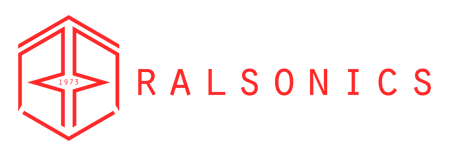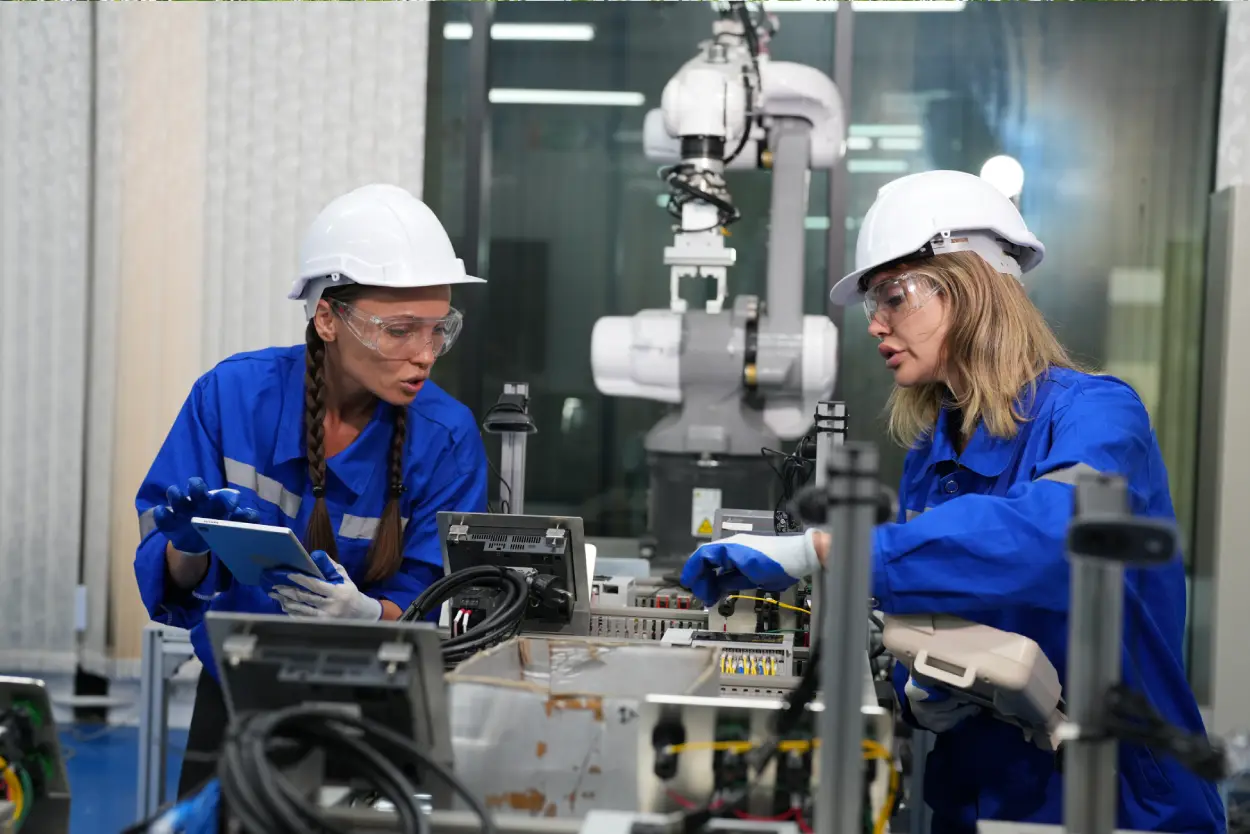13 Jul Introduction to vapor degreasers
Reading Time: < 1 minutes
In today's industrial and manufacturing sectors, the need for efficient and effective cleaning methods is paramount. One technology that has gained significant popularity is the vapor degreaser. Vapor degreasers offer a powerful and reliable solution for removing various contaminants from a wide range of materials and components. In this blog post, we will provide an introduction to vapor degreasers, exploring what they are and how they work.
A vapor degreaser is a specialized cleaning system used to remove grease, oil, flux, wax, and other contaminants from the surfaces of materials, parts, and components. It operates on the principle of solvents and vaporization, providing a thorough and efficient cleaning process. Vapor degreasers are widely used in industries such as aerospace, automotive, electronics, medical devices, and precision manufacturing.
The operation of a vapor degreaser involves several key steps that work together to achieve optimal cleaning results. Let's delve into each of these steps:
The first step is to select a suitable cleaning solvent for the specific application. Different solvents offer varying degrees of effectiveness and compatibility with different materials and contaminants. Common solvents used in vapor degreasers include chlorinated solvents like trichloroethylene (TCE) and perchloroethylene (PERC), as well as non-chlorinated solvents such as hydrocarbons and fluorinated fluids.
The chosen cleaning solvent is heated to a specific temperature, typically below its boiling point. Heating helps to increase the solvency and cleaning efficiency of the solvent, enhancing its ability to dissolve contaminants.
The contaminated parts or components are immersed in the heated solvent bath within the vapor degreaser. As the parts enter the solvent, the heat energy transfers to the surface, causing the contaminants to soften and dissolve in the liquid solvent. The vapor degreaser is designed with a boiling sump or reservoir separate from the cleaning tank. This sump contains the heated solvent, which vaporizes due to the elevated temperature.
Once the parts are withdrawn from the solvent bath, they are exposed to the vapor-rich environment within the vapor degreaser. As the hot vapors come into contact with the cooler surfaces of the parts, they condense, depositing heat and transferring energy to the parts. This process helps to further dissolve any remaining contaminants and remove excess solvent.
After condensation, the excess solvent and dissolved contaminants gravitate down into the boiling sump or reservoir, which acts as a collection vessel. This separation allows clean solvent to be continuously available for the next cleaning cycle, while the contaminated solvent remains isolated for proper disposal or recycling.
In some cases, additional cleaning or drying steps may be required to achieve the desired level of cleanliness. This can involve rinsing the parts with a clean solvent or using other techniques such as forced air or vacuum drying.
Vapor degreasers offer several advantages over other cleaning methods, making them a preferred choice for many industries. Here are some key benefits:
Vapor degreasers provide excellent cleaning results, removing stubborn contaminants from intricate parts and complex geometries with ease. The solvent vapors penetrate crevices and blind holes, ensuring thorough cleaning.
The vapor degreasing process is relatively fast and efficient, allowing for quick turnaround times and increased productivity. It eliminates the need for manual scrubbing or extensive mechanical cleaning, saving both time and money on labor costs.
Modern vapor degreasers are designed with features to minimize solvent loss and emissions. Closed-loop systems, air-tight seals, and refrigeration units for solvent recovery contribute to environmental sustainability.
Vapor degreasers can accommodate a wide range of materials, including metals, plastics, glass, ceramics, and electronic components. This versatility makes them suitable for diverse applications across different industries.
Despite the initial investment, vapor degreasers offer long-term cost savings. They require minimal maintenance, and solvent recycling options reduce the overall consumption of cleaning agents.
Vapor degreasers are a powerful cleaning solution that combines solvent cleaning with vaporization to remove contaminants from various materials and components. By harnessing the solvency and vaporization properties of cleaning agents, vapor degreasers offer efficient, fast, and environmentally friendly cleaning processes. As industries continue to prioritize cleanliness and precision, vapor degreasers play a crucial role in meeting their stringent cleaning requirements.
If you enjoyed reading this blog and would like to read more of our blogs, here are a few recommendations:
Fully automated of cleaning small brass components in fully automated machine
Ultrasonic cleaners for heat exchangers
Ultrasonic for cleaning maintance
Understanding ultrasonic homogenization and ultrasonic emulsification
Ralsonics has been in business with ultrasonic technology for over 49 years. Ralsonics provides a full array of ultrasonic resonators, cleaners, and sonicators. With the company's ability to design and build its own equipment, the products can be customized to meet specific requirements. Why the delay? Contact Us today!
What is a vapor Degreaser?
A vapor degreaser is a specialized cleaning system used to remove grease, oil, flux, wax, and other contaminants from the surfaces of materials, parts, and components. It operates on the principle of solvents and vaporization, providing a thorough and efficient cleaning process. Vapor degreasers are widely used in industries such as aerospace, automotive, electronics, medical devices, and precision manufacturing.
How Does a Vapor Degreaser Work?
The operation of a vapor degreaser involves several key steps that work together to achieve optimal cleaning results. Let's delve into each of these steps:
1. Cleaning Solvent Selection:
The first step is to select a suitable cleaning solvent for the specific application. Different solvents offer varying degrees of effectiveness and compatibility with different materials and contaminants. Common solvents used in vapor degreasers include chlorinated solvents like trichloroethylene (TCE) and perchloroethylene (PERC), as well as non-chlorinated solvents such as hydrocarbons and fluorinated fluids.
2. Heating the Solvent:
The chosen cleaning solvent is heated to a specific temperature, typically below its boiling point. Heating helps to increase the solvency and cleaning efficiency of the solvent, enhancing its ability to dissolve contaminants.
3. Immersion and vaporization:
The contaminated parts or components are immersed in the heated solvent bath within the vapor degreaser. As the parts enter the solvent, the heat energy transfers to the surface, causing the contaminants to soften and dissolve in the liquid solvent. The vapor degreaser is designed with a boiling sump or reservoir separate from the cleaning tank. This sump contains the heated solvent, which vaporizes due to the elevated temperature.
4. Condensation and Cooling:
Once the parts are withdrawn from the solvent bath, they are exposed to the vapor-rich environment within the vapor degreaser. As the hot vapors come into contact with the cooler surfaces of the parts, they condense, depositing heat and transferring energy to the parts. This process helps to further dissolve any remaining contaminants and remove excess solvent.
5. Gravity Drain and Collection:
After condensation, the excess solvent and dissolved contaminants gravitate down into the boiling sump or reservoir, which acts as a collection vessel. This separation allows clean solvent to be continuously available for the next cleaning cycle, while the contaminated solvent remains isolated for proper disposal or recycling.
6. Secondary Cleaning and Drying (Optional):
In some cases, additional cleaning or drying steps may be required to achieve the desired level of cleanliness. This can involve rinsing the parts with a clean solvent or using other techniques such as forced air or vacuum drying.
Benefits of Vapor Degreasers
Vapor degreasers offer several advantages over other cleaning methods, making them a preferred choice for many industries. Here are some key benefits:
1. High Cleaning Efficiency:
Vapor degreasers provide excellent cleaning results, removing stubborn contaminants from intricate parts and complex geometries with ease. The solvent vapors penetrate crevices and blind holes, ensuring thorough cleaning.
2. Fast and Efficient Process:
The vapor degreasing process is relatively fast and efficient, allowing for quick turnaround times and increased productivity. It eliminates the need for manual scrubbing or extensive mechanical cleaning, saving both time and money on labor costs.
3. Environmental Friendliness:
Modern vapor degreasers are designed with features to minimize solvent loss and emissions. Closed-loop systems, air-tight seals, and refrigeration units for solvent recovery contribute to environmental sustainability.
4. Compatibility with Various Materials:
Vapor degreasers can accommodate a wide range of materials, including metals, plastics, glass, ceramics, and electronic components. This versatility makes them suitable for diverse applications across different industries.
5. Cost-Effective:
Despite the initial investment, vapor degreasers offer long-term cost savings. They require minimal maintenance, and solvent recycling options reduce the overall consumption of cleaning agents.
Vapor degreasers are a powerful cleaning solution that combines solvent cleaning with vaporization to remove contaminants from various materials and components. By harnessing the solvency and vaporization properties of cleaning agents, vapor degreasers offer efficient, fast, and environmentally friendly cleaning processes. As industries continue to prioritize cleanliness and precision, vapor degreasers play a crucial role in meeting their stringent cleaning requirements.
If you enjoyed reading this blog and would like to read more of our blogs, here are a few recommendations:
Fully automated of cleaning small brass components in fully automated machine
Ultrasonic cleaners for heat exchangers
Ultrasonic for cleaning maintance
Understanding ultrasonic homogenization and ultrasonic emulsification
Ralsonics has been in business with ultrasonic technology for over 49 years. Ralsonics provides a full array of ultrasonic resonators, cleaners, and sonicators. With the company's ability to design and build its own equipment, the products can be customized to meet specific requirements. Why the delay? Contact Us today!



No Comments